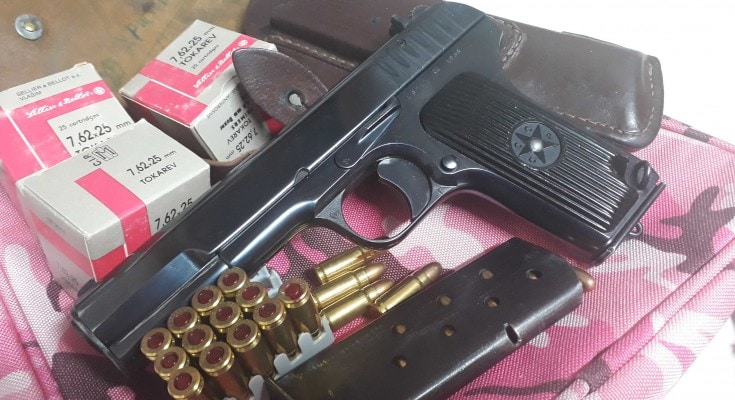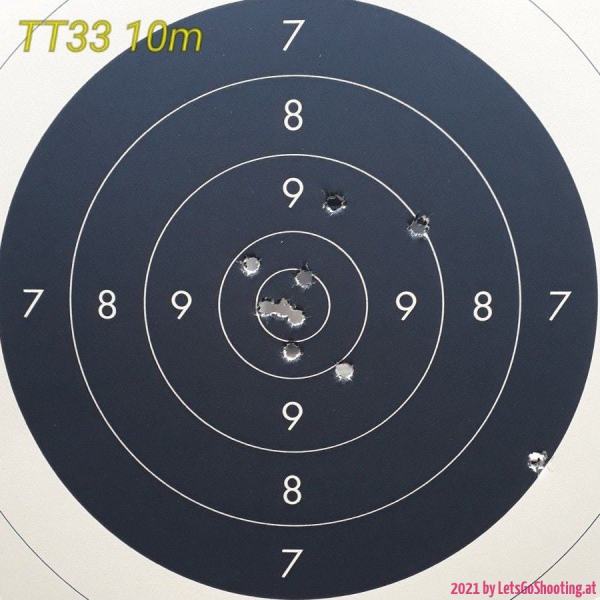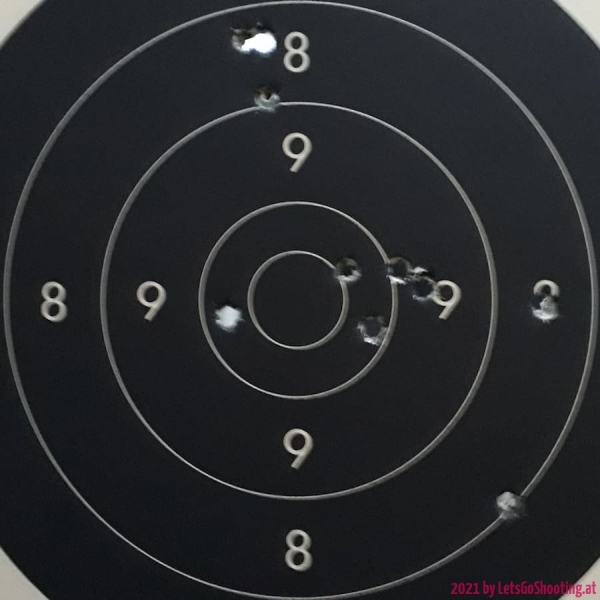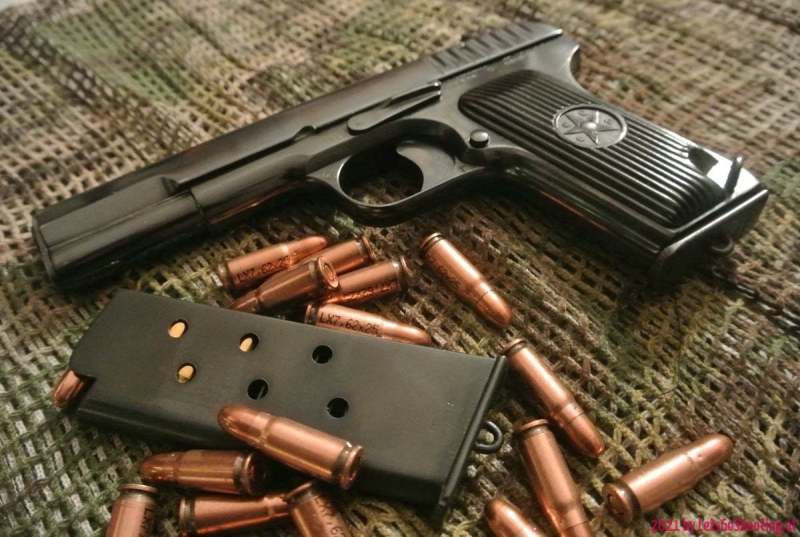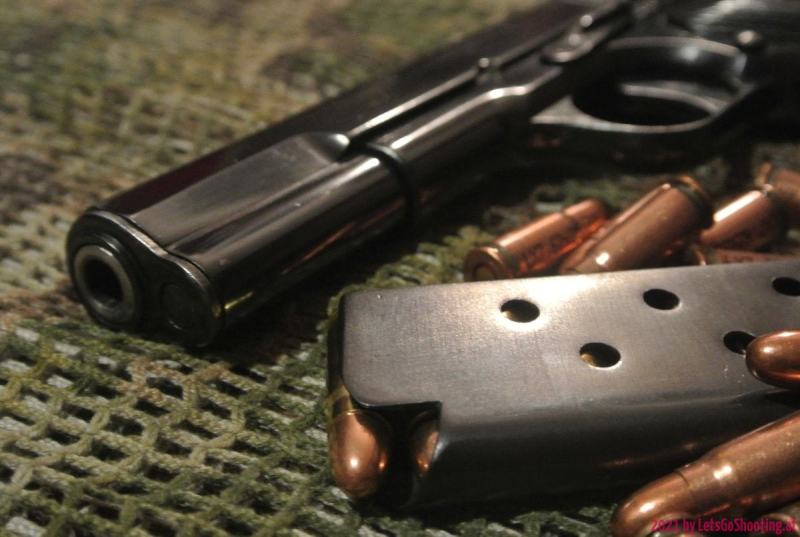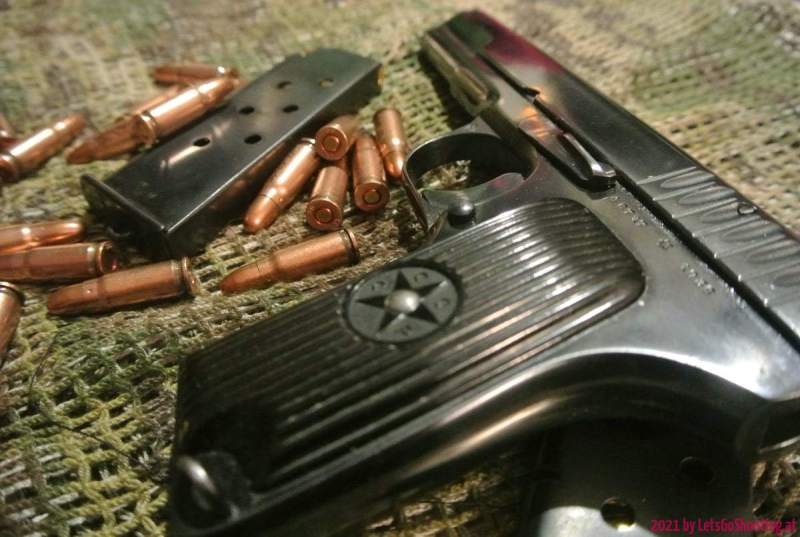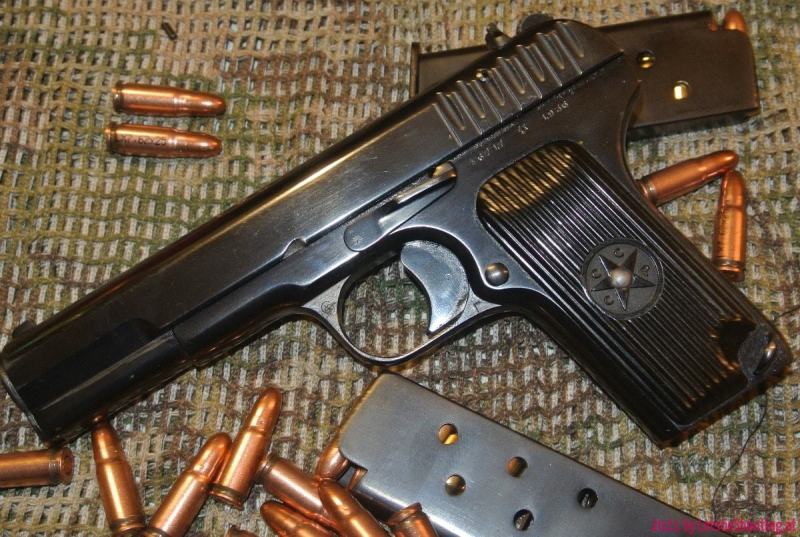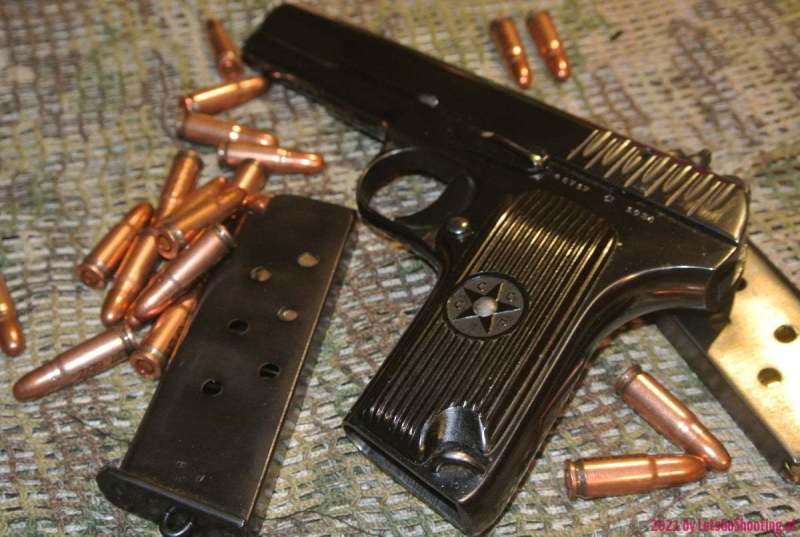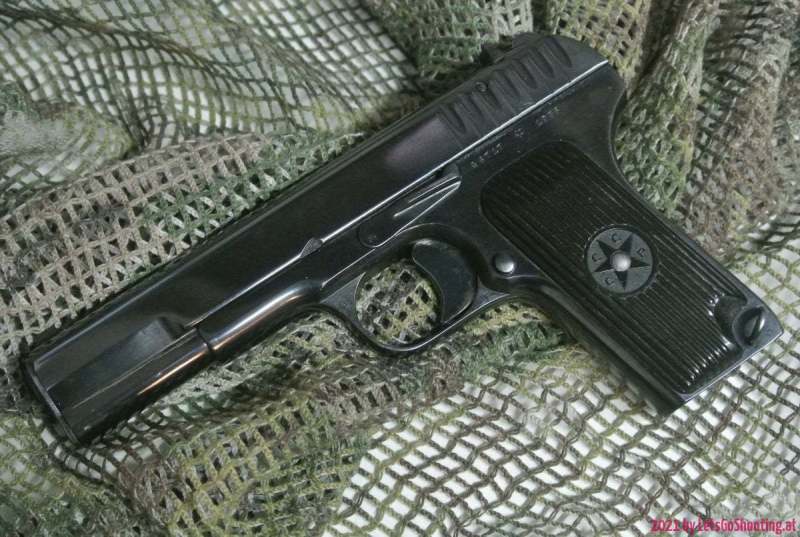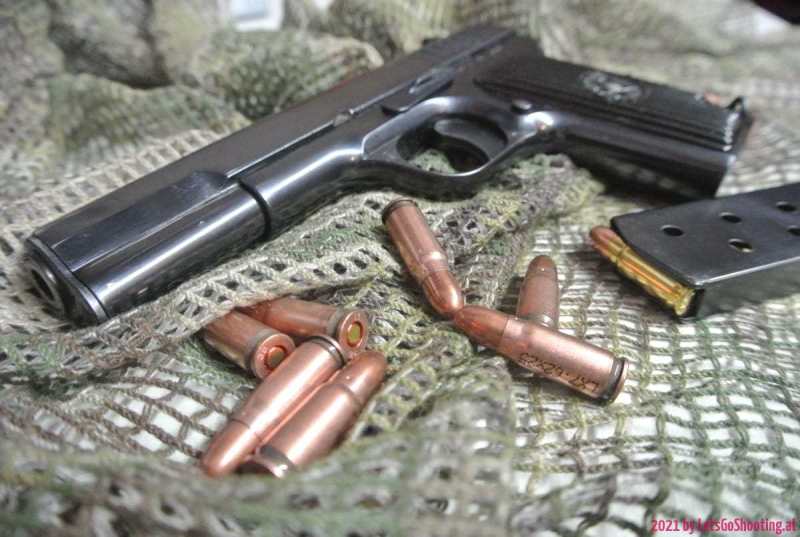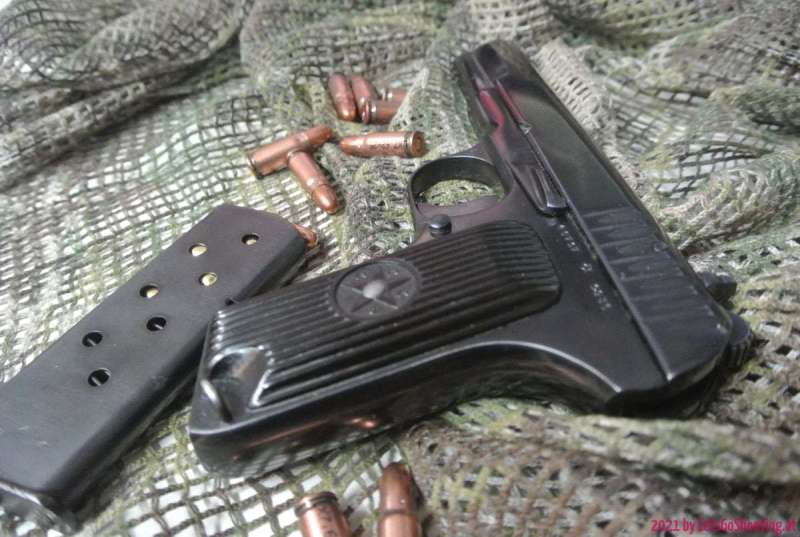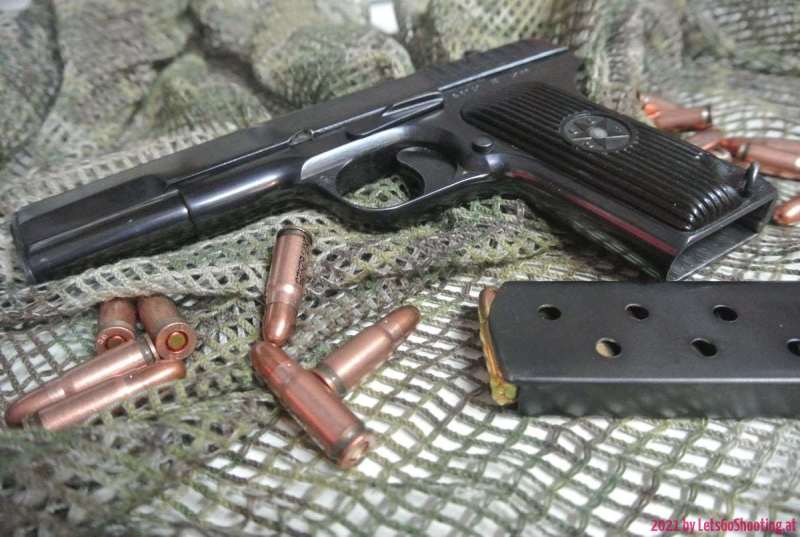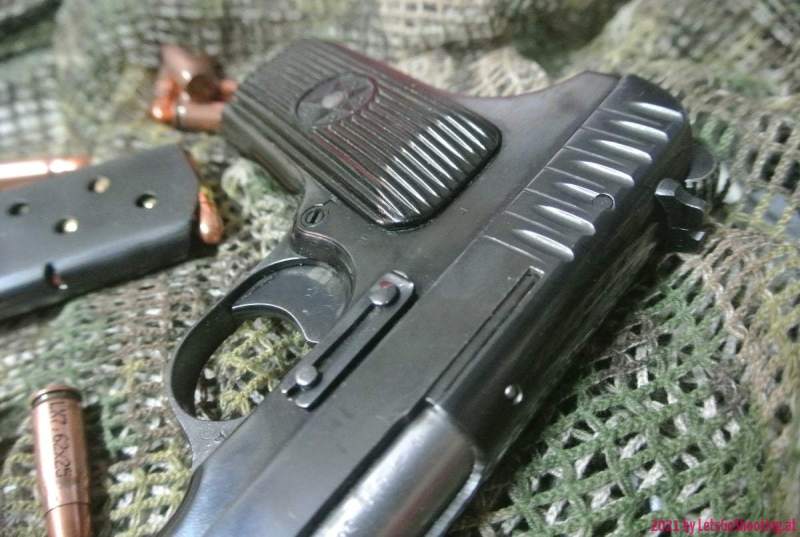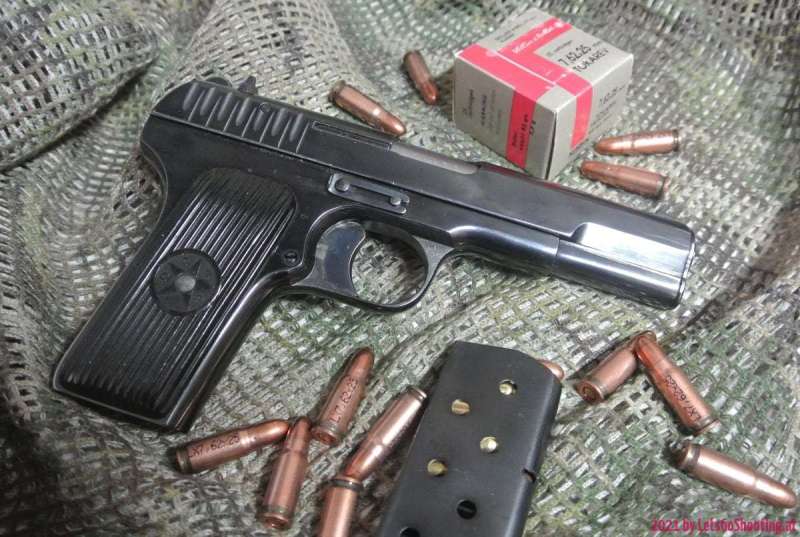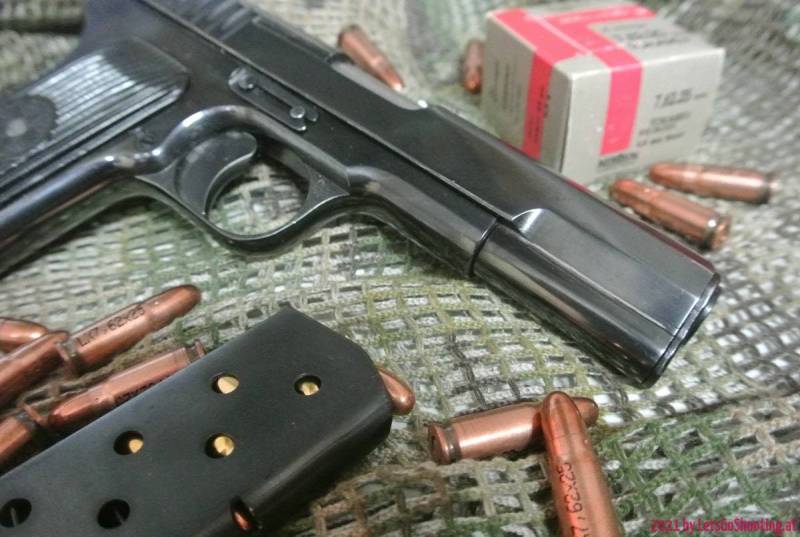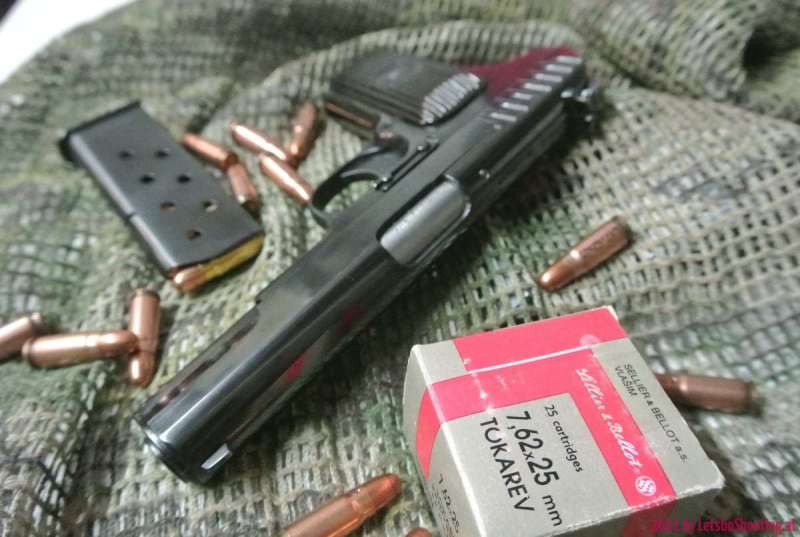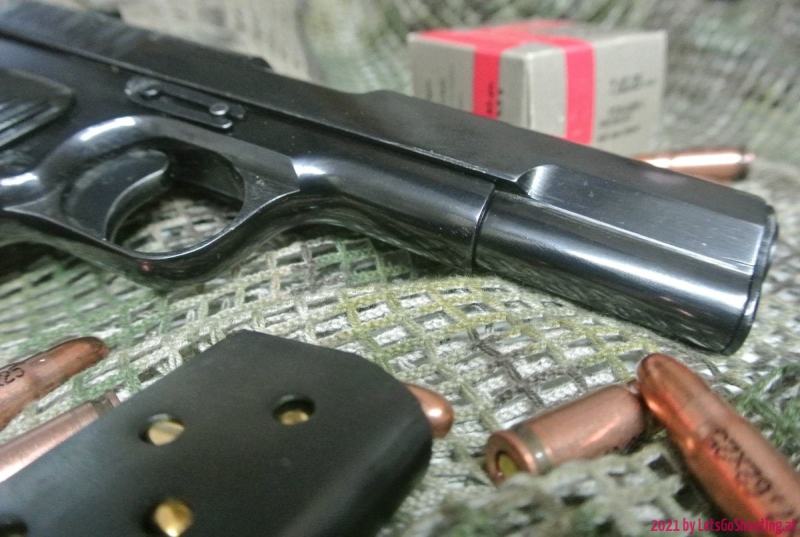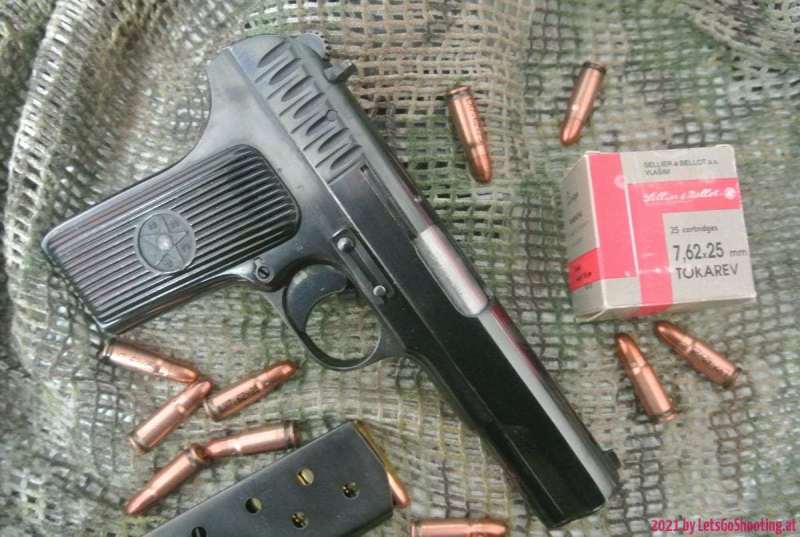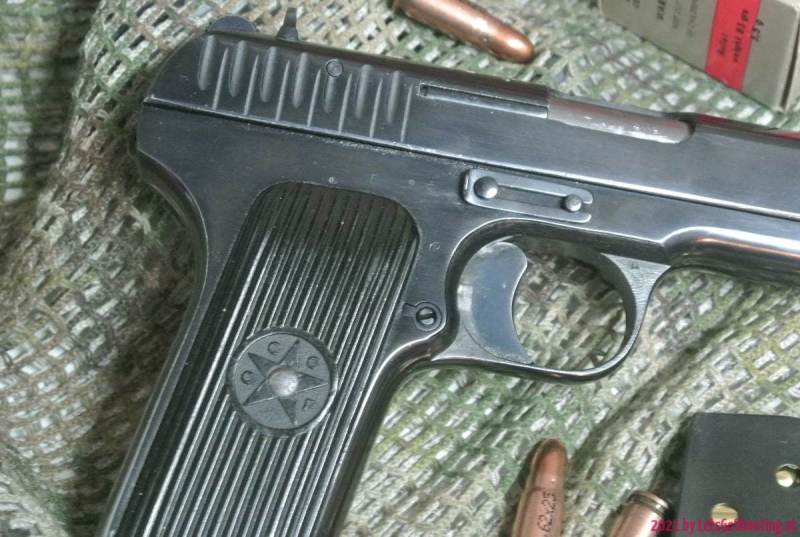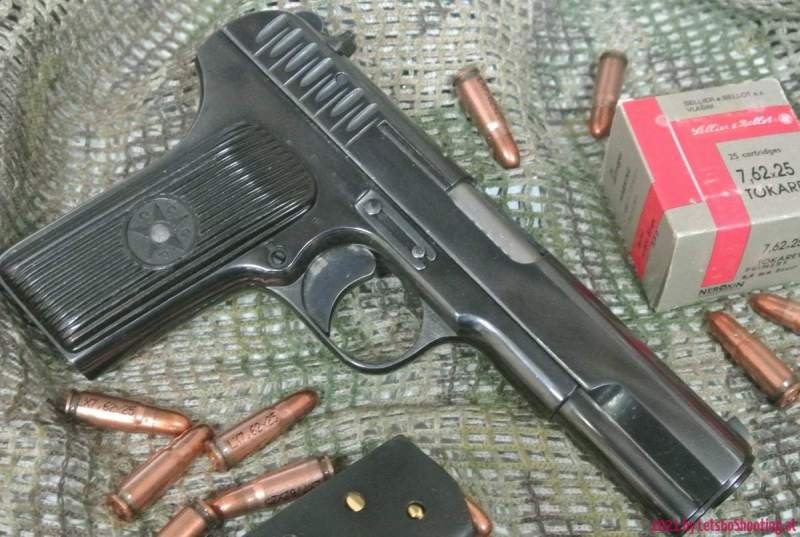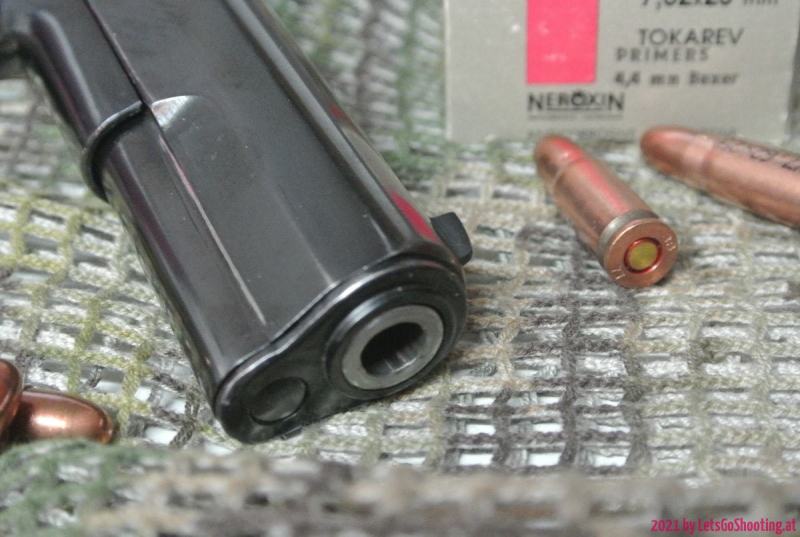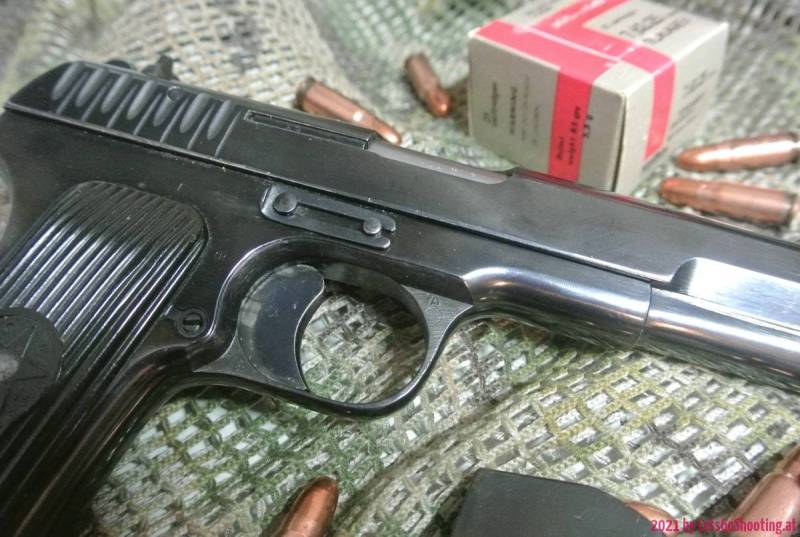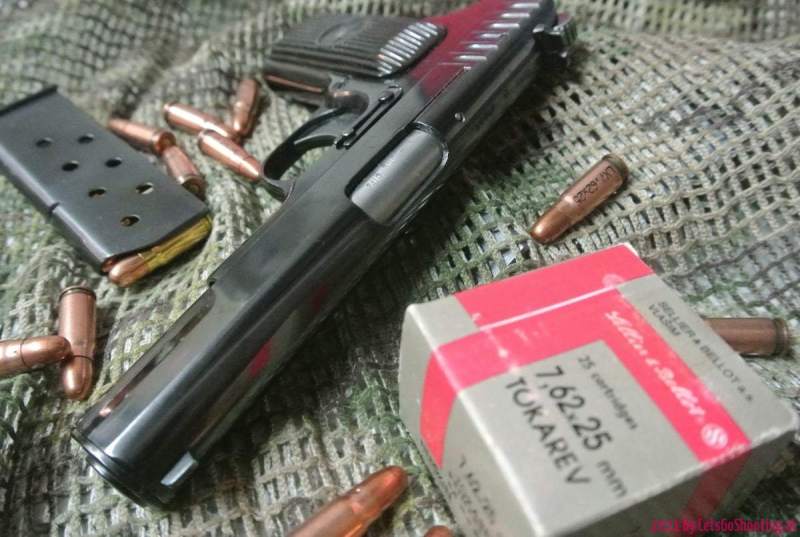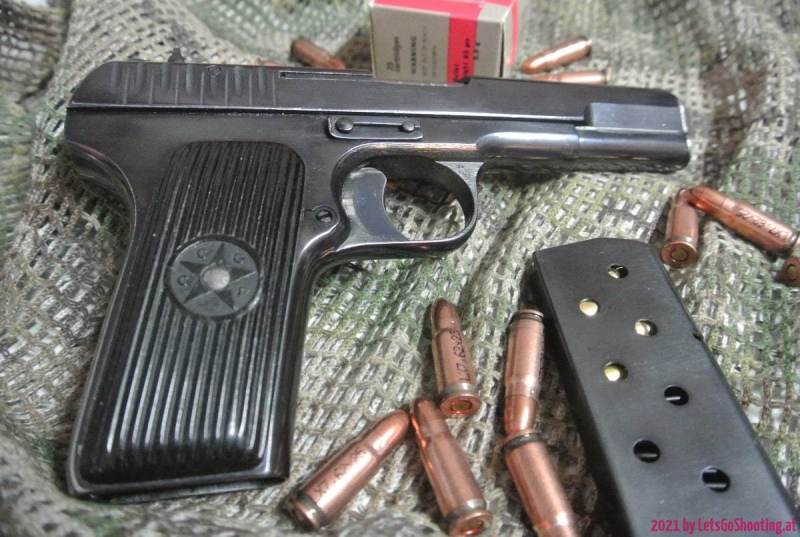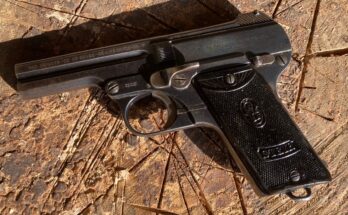The Tokarev TT33 is a Soviet semi-automatic pistol developed by Fedor Tokarev and officially adopted in 1933. It replaced the Nagant M1895 revolver as the standard sidearm of the Red Army and remained in service through World War II and into the Cold War era. The TT33 was designed for simplicity, durability, and ease of mass production, making it ideal for wartime conditions.
Tokarev TT33 – technical specifications
- Overall length: 196 mm
- Overall height: 130 mm
- Overall width: 30.5 mm
- Weight (unloaded): 854 g
- Barrel length: 117 mm
- Magazine capacity: up to 8 rounds (7.62 × 25 mm Tokarev)
- Number of rifling grooves: 4
- Twist direction: right-hand
- Built: 1935 (this model)
The pistol is chambered in 7.62×25mm Tokarev, a high-velocity cartridge derived from the 7.63×25mm Mauser. This round is known for its excellent penetration and flat trajectory, making it effective against body armor and suitable for use in submachine guns like the PPSh-41. The cartridge’s performance is one of the TT33’s defining features, offering superior ballistic characteristics compared to many contemporary pistol calibers.
Mechanically, the TT33 uses a short recoil, locked-breech system similar to the Colt 1911, but with several simplifications. It features an 8-round single-stack magazine and lacks a manual safety, relying instead on a half-cock notch on the hammer for safe carry. This design choice reflects Soviet priorities for ruggedness and straightforward operation.
The TT33 was widely exported and copied by other nations, including China (Type 51/54), Yugoslavia (M57), and Poland (PW wz.33). These variants often included modifications such as extended grips or manual safeties.
Today, the Tokarev TT33 is valued by collectors and shooting enthusiasts for its historical significance, robust construction, and the availability of inexpensive surplus ammunition. It remains a symbol of Soviet engineering and military history, representing a pivotal era in firearm development.
Die Tokarev TT33 (russisch Пистолет ТТ-33: Тульский, Токарева образца 1933 года, Tulskij, Tokarewa obrasza 1933 goda, auf deutsch: Tulaer Pistole von Tokarew Modell 1933) ist eine sowjetische Selbstladepistole im Kaliber 7,62 × 25 mm.
Den in der Waffenfabrik Tula von Fjodor Tokarew entwickelten Rückstoßlader machte die Rote Armee in den 1930er-Jahren zur Ordonnanzwaffe.
Die TT-33 war Nachfolgerin des Nagant-Revolvers und wurde Anfang der 1950er-Jahre durch die 9-mm-Pistole Makarow ersetzt.
Wikipedia
